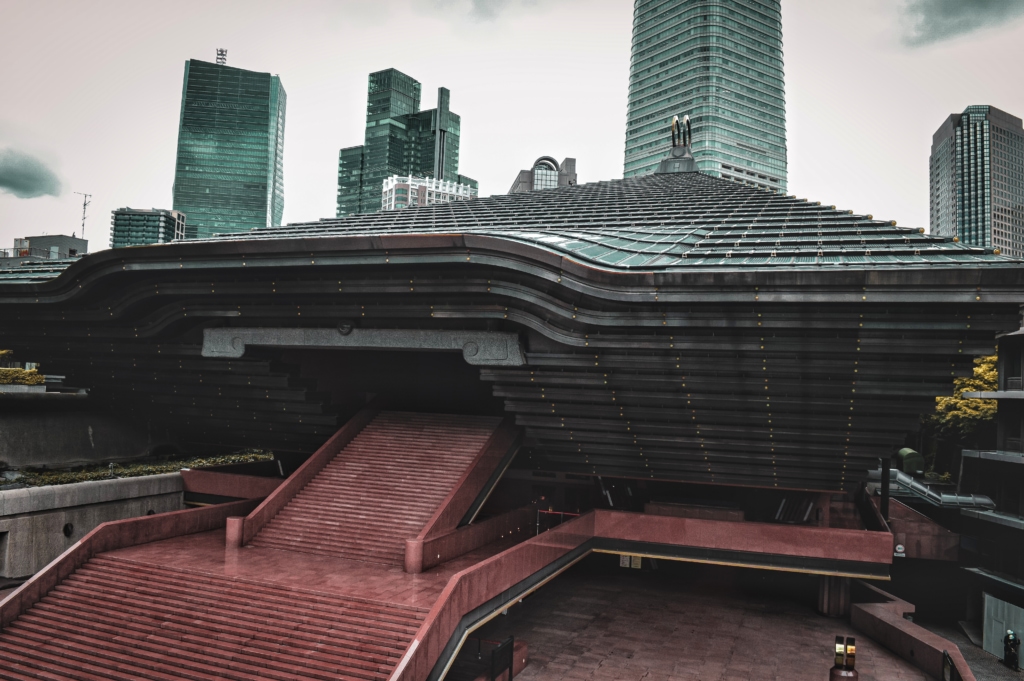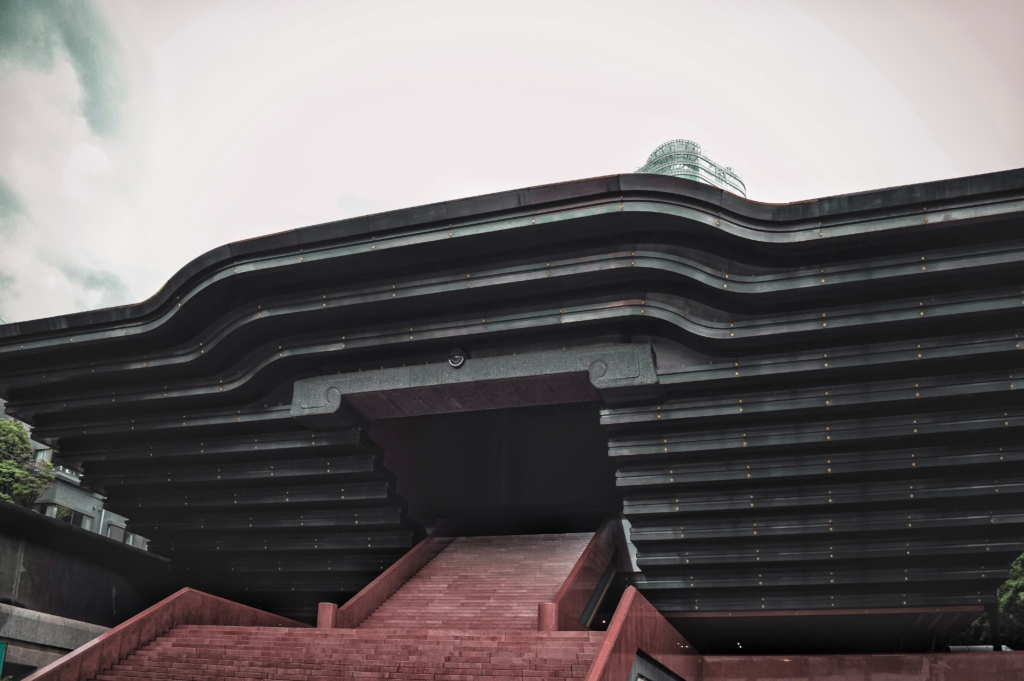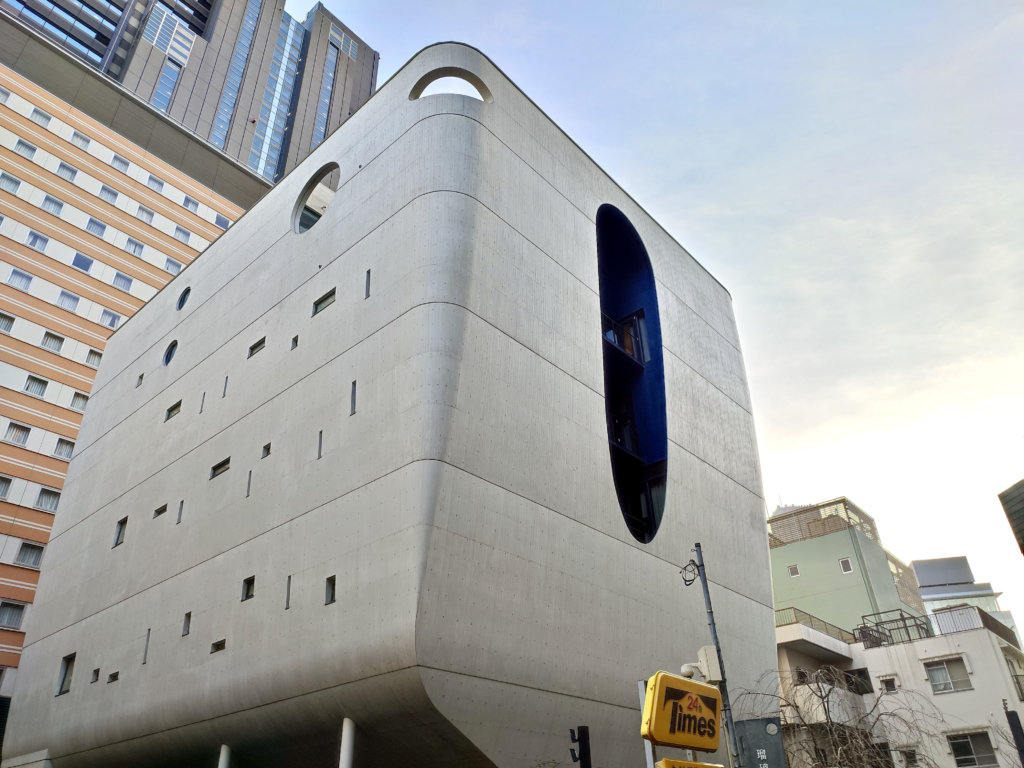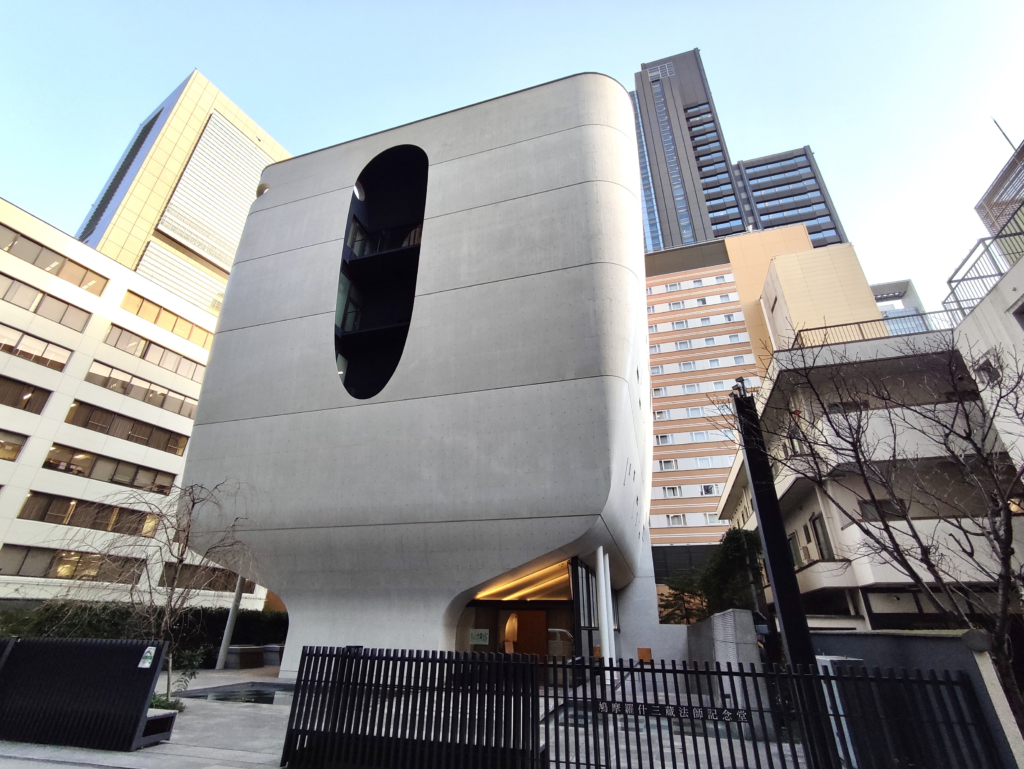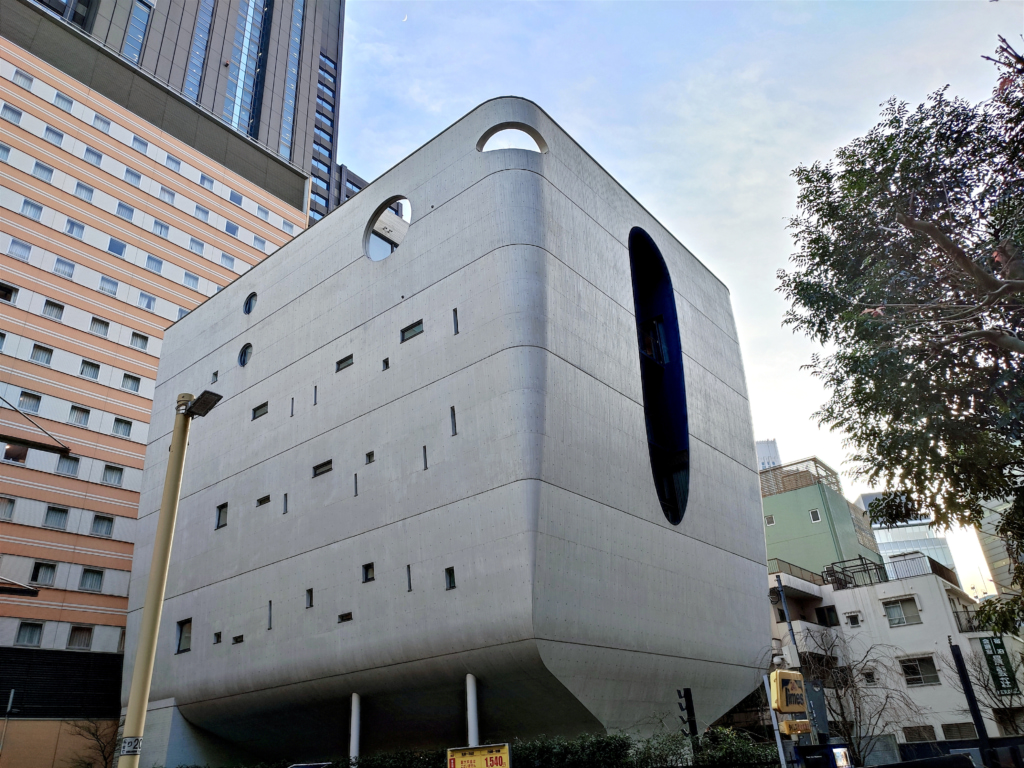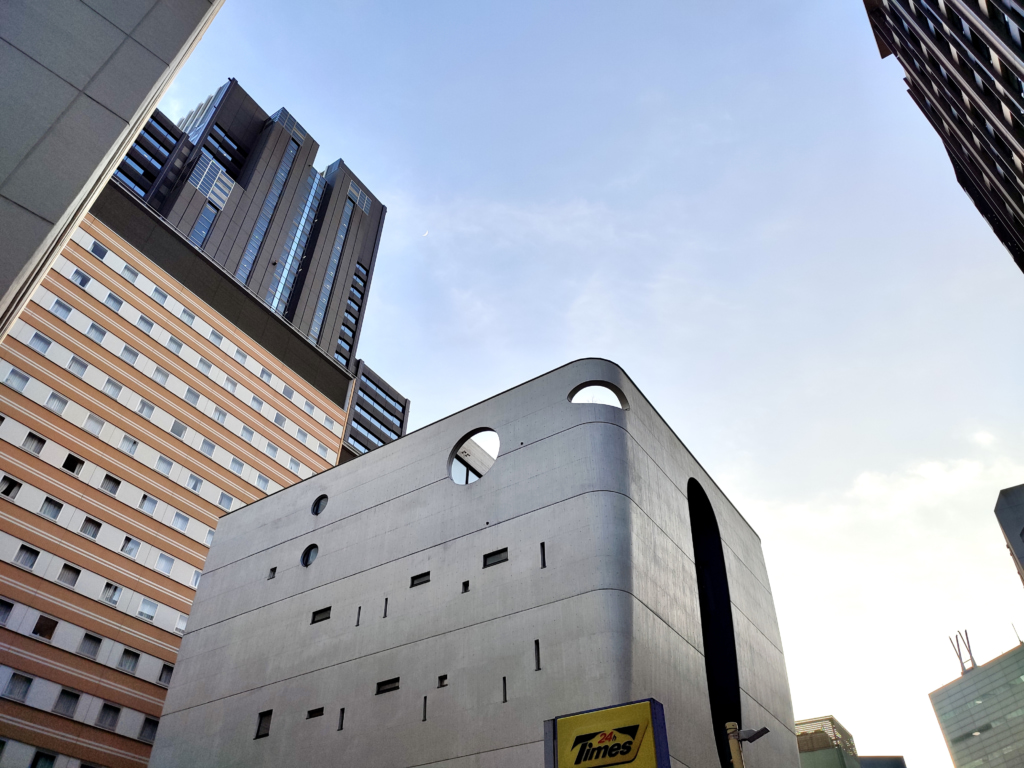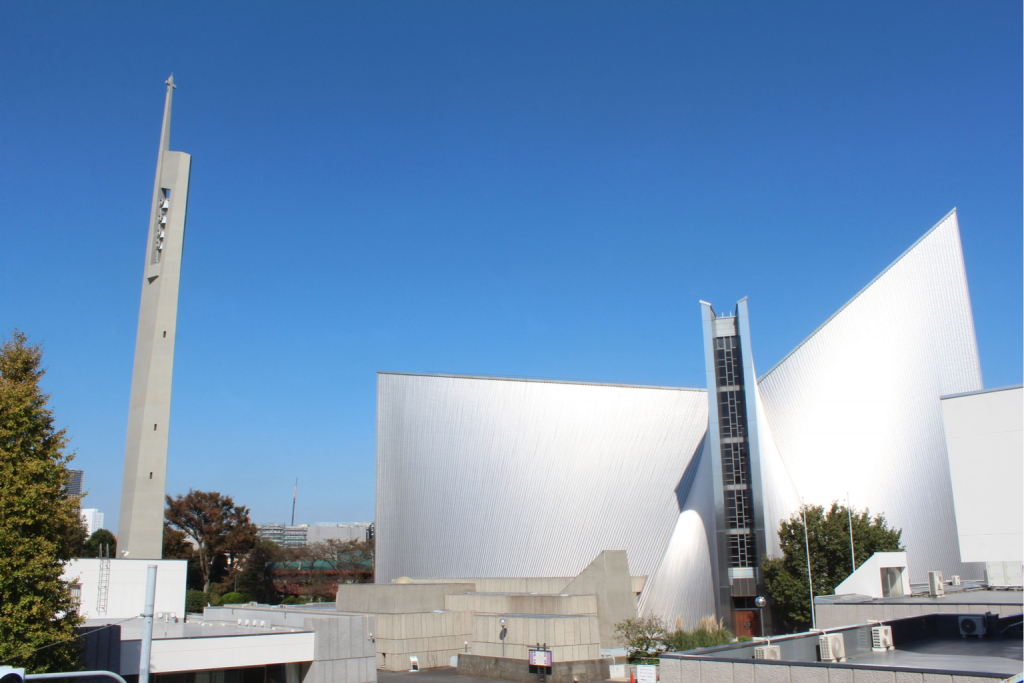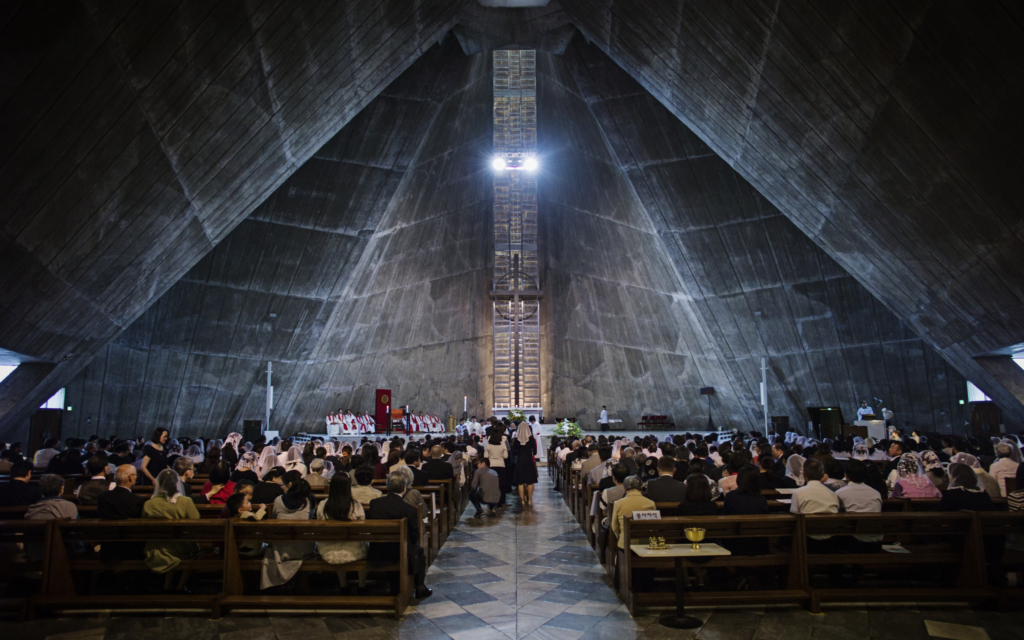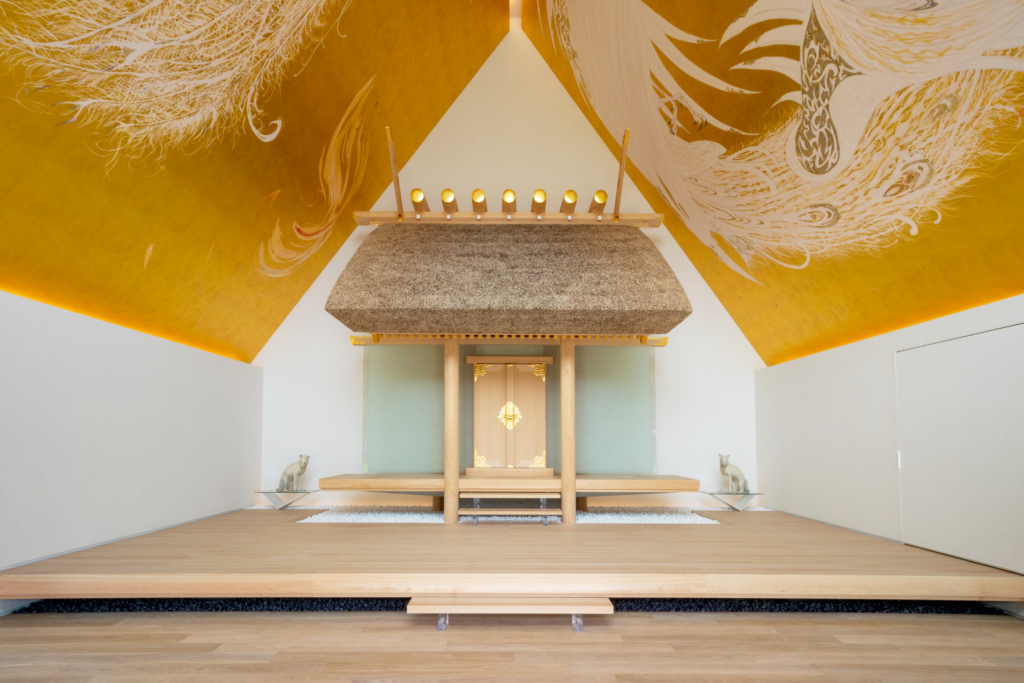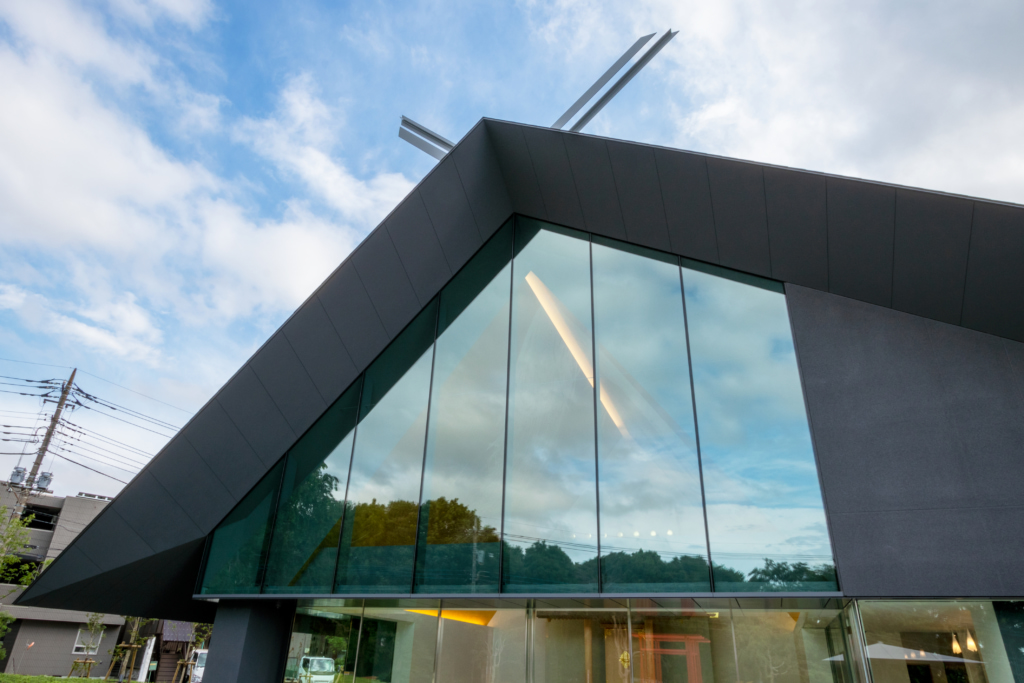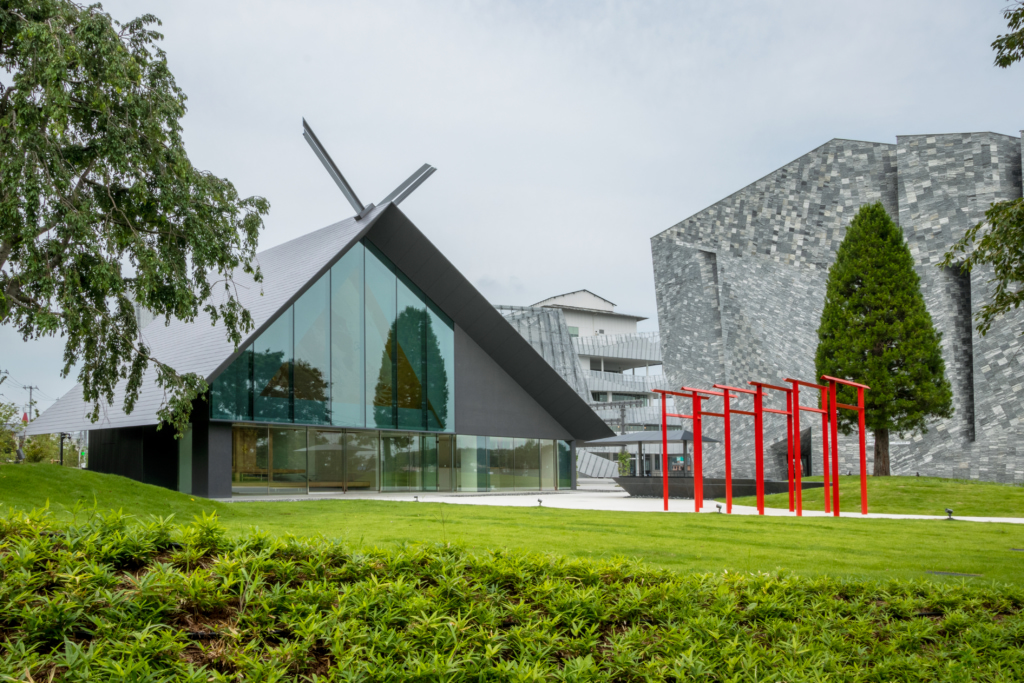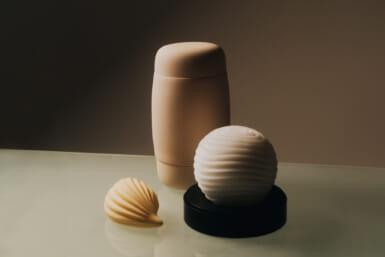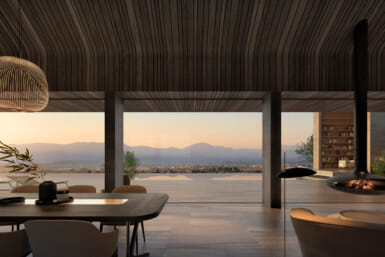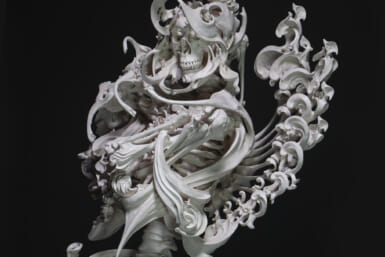We might be used to a more traditional centuries-old architectural style when it comes to places of worship — whether it’s churches, mosques, Shinto shrines, Buddhist temples, or any other religion and denomination — but the crosses, stained glass windows or torii gates can take on new materials and shapes.
Innovation in the late 20th century was everywhere in Japan and the country with the most laureates for the Pritzker Architecture Prize naturally has buildings that leave us in awe to this day. Here are seven religious spots in Tokyo (two Buddhist temples, four churches and one Shinto shrine) that are visual treats for architecture fans.
1.
Reiyukai Shakaden Temple
Unofficially nicknamed “The Spaceship Temple” or “Star Trek Temple” by netizens, this place of worship is actually an offshoot of Buddhism simply called “Inner Peace.” The massive temple built in 1975 is just a few steps from Tokyo Tower. It’s open to the public, so you can peek at the equally striking interior. The temple also houses an 8-meter wooden Buddha statue and a reservoir with 400 tonnes of drinking water for use in case of a disaster such as an earthquake.
The designer of the building, Seiichi Shirai, studied architecture in pre-war Berlin and is known for peculiar buildings like the Noa Building just across from Reiyukai Shakaden Temple. The cylindrical tower is worth a visit too, for those interested in unique architecture.
2.
Shinjuku Rurikoin Byakurengedo
This futuristic-looking structure is the work of architect Kiyoshi Takeyama, known for minimalism, clean lines and natural curves. He achieves this in Rurikoin Byakurengedo as the power lines are hidden underground to create a clean, unobstructed space. This is also the world’s largest building using white concrete, unprecedented in architectural history. Due to the materials and the earthquake-proofing, it’s estimated that the building will last at least 300 years.
This Buddhist temple looks different from all angles. The windows are scattered irregularly, there’s a hidden rooftop garden, a waterfall inside and a shallow water pool at the front. It’s a gorgeous building that you can book a tour to visit. Well hidden among the urban sprawl, it’s only a few minutes’ walk from Shinjuku Station.
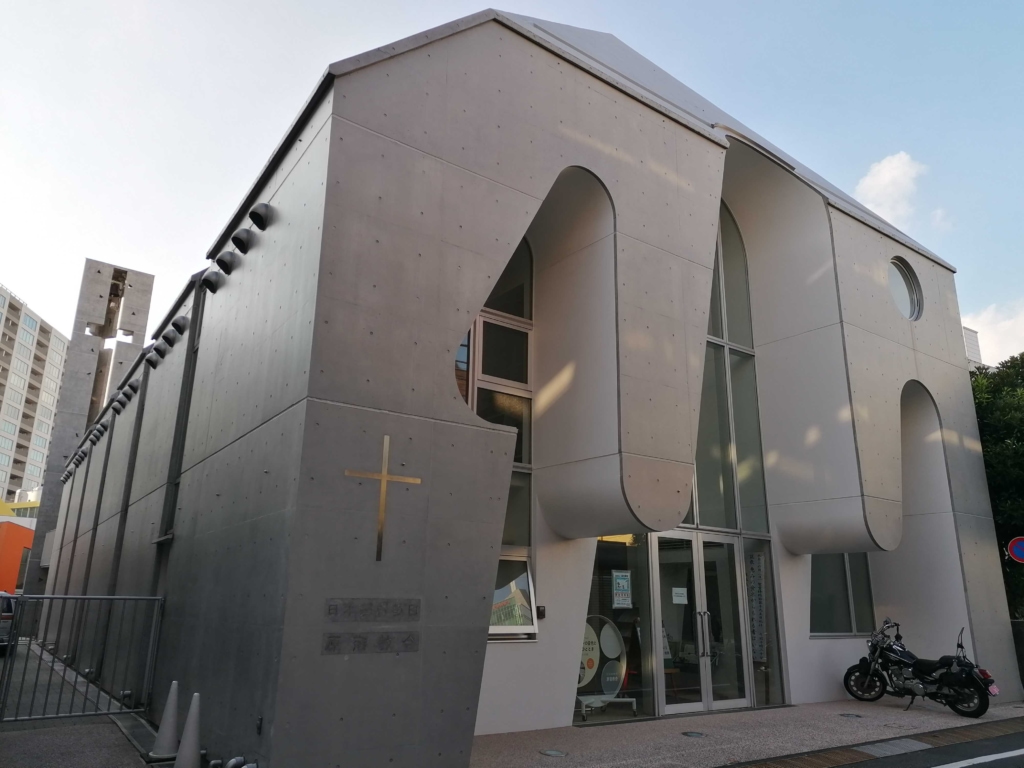
Photo by Zoria Petkoska
3.
The United Church of Christ in Japan
Tucked in the backstreets of Harajuku, this beautiful church was designed by Ciel Rouge Création (an architectural office based in Paris, Marseille and Tokyo) and finished in 2006. The stylish concrete building balances the grey austerity with undulating shapes and windows that fill the church with sunlight by day. “We create the impression of a biblical open sky image from which the light amid the Holy Spirit descends upon the followers and worshippers,” the statement of the architects’ reads. The building has six arches and a bell tower that symbolically represents the seven elements, the seven days of creation and the seven churches of the Orient.
4.
St. Mary’s Cathedral
Built by Kenzo Tange, the father of Metabolism architecture, St. Mary’s Cathedral replaced a traditional Gothic-style church that was destroyed in the air raids of World War II. The cathedral is the main place of worship for the Catholic Church in Tokyo and was also the site of the architect’s funeral in 2005.
Shining in white stainless steel, the minimalist building resembles a bird that’s just about to take flight. The lines are sharp and clean, yet organic and asymmetric. There is none of the lavish Catholic ornamentation, not even a big cross on the main building. That’s because the building itself is in the shape of a cross when looking at it from above. There’s also a small cross on the towering spire next to the cathedral. There is one inside too, in front of one long narrow central window surrounded by a cave-like stone interior.
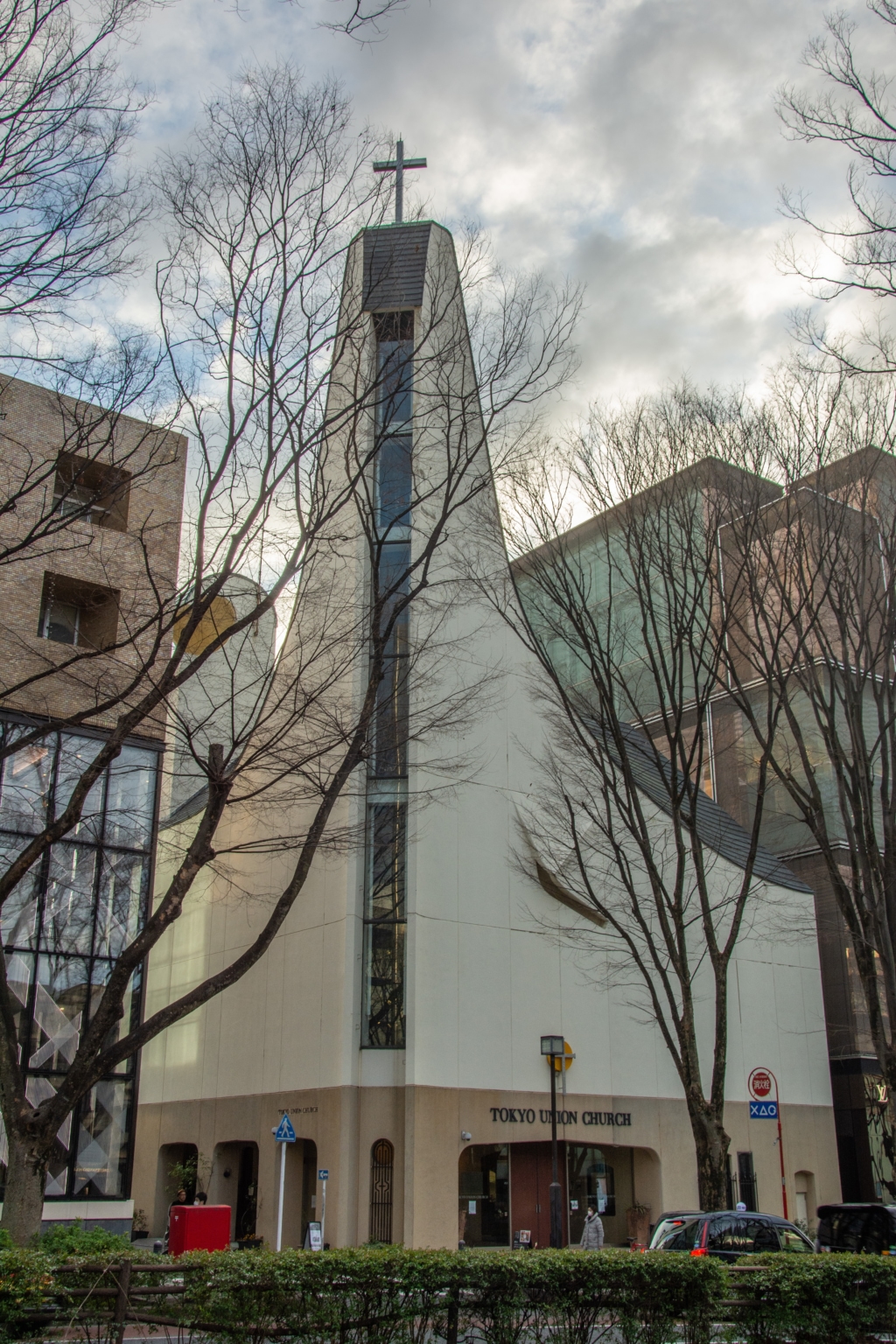
Photo by Nina Alizada via Shutterstock
5.
Tokyo Union Church
Shoulder to shoulder with the flagship stores of Dior, Hugo Boss and Burberry, Tokyo Union Church is right on Omotesando Boulevard, one of Tokyo’s fanciest districts. And as with the big brands’ buildings, it too has a sleek modern architectural design.
Built in 1980, this distinctive church was designed and built by Nishimatsu Construction. It’s the latest building to house the much older Tokyo Union Church. In the same spot, the old church was demolished due to age and before it, an older church building was destroyed during a fierce bombing raid during World War II. In fact, Tokyo Union Church was the first church to be allowed by the shogun to be in the capital back in 1872.
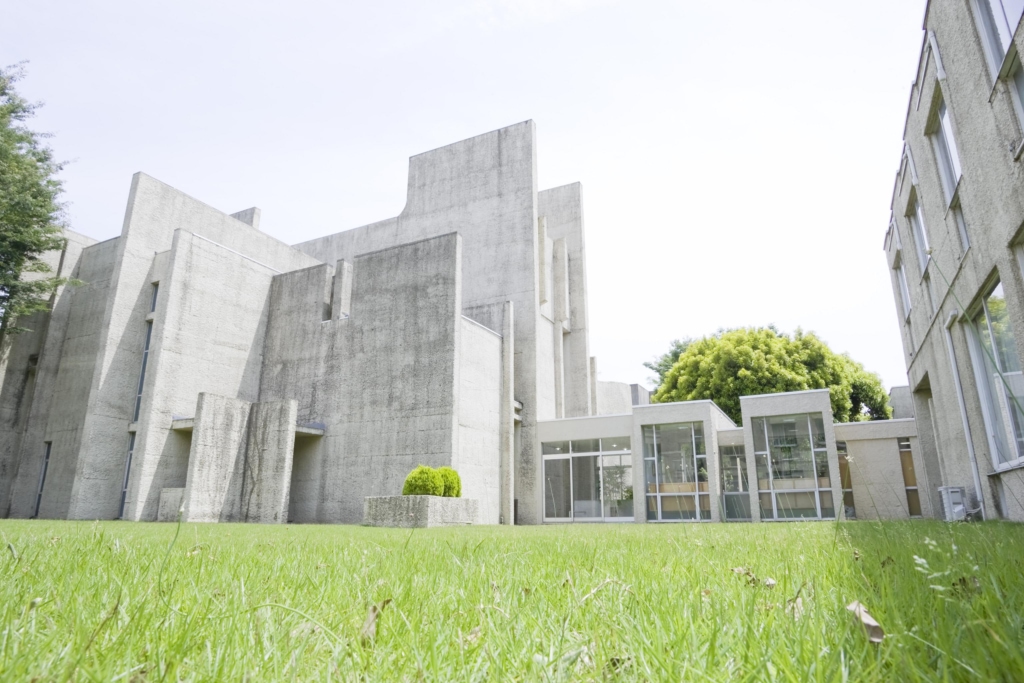
Japan Lutheran Theological College by Kaerukero2, CC BY-SA 3.0 via Wikimedia Commons
6.
Japan Lutheran Theological Seminary
A whole compound enclosing a college, student dorms, a library and, of course, a place of worship, the Japan Lutheran Theological Seminary is in Mitaka City, a quieter part of west Tokyo next to the International Christian University (ICU). The complex was finished in 1969, designed by master architect Togo Murano. He reportedly took inspiration from American priest and architect of religious buildings Edward Sövik and the architecture of Finnish designer Eero Saarinen, who was noted for his wide-ranging array of designs for buildings and monuments. The Brutalist concrete look was popular for universities all across Europe, the US and South America, bringing this Tokyo institution in line with the most innovative trends in architecture at the time. The chapel is reminiscent of St. Mary’s Cathedral too, with its tall central window and the clean unornamented walls.
7.
Musashino Reiwa Shrine
Not in Tokyo proper, this Shinto shrine in Tokorozawa, Saitama is still very close to the capital and part of The Greater Tokyo Area. Built in 2020, the shrine is part of a complex with the Kadokawa Culture Museum, all designed in a collaboration between Kengo Kuma and Kajima Design. Next to the futuristic castle-like Kadokawa Culture Museum stands the Musashino Reiwa Shrine — a fusion of past, present and future. Following the rules of a religious structure, the innovation comes through the modern materials used instead of the traditional red-painted wood. A LED-lit main torii gate is encased in wire and changes color at night. There are torii gates made of metal and walls made of glass.
Beyond the materials, this shrine is also linked to pop culture as Kadokawa Publishing is the company behind iconic manga, novels and games such as the Cowboy Bebop manga. This is why the golden ceiling inside was painted by Yoshitaka Amano, a well-known character designer for the Final Fantasy series. It is also why the red flags fluttering around the row of torii gates have 88 Anime Pilgrimage locations inscribed on them.

